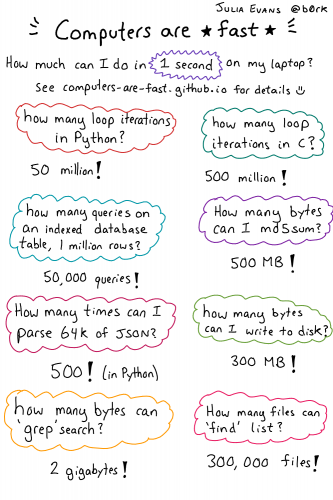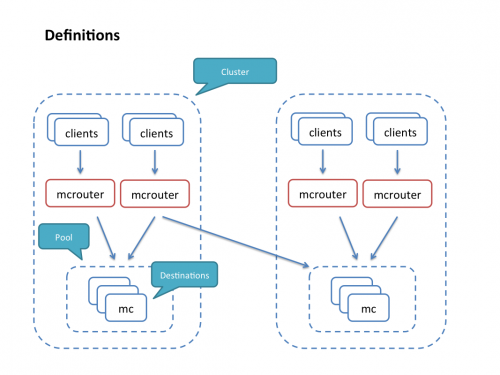One of the recent Julia’s Drawings exposes how fast computers really are. See this page for more examples of how much a computer can do in just one second.
Tag: performance
350+ Data Structure Problems with Solutions
Here is a rather extensive collection of 350+ data structure problems with solutions. The list varies from the usual searching and sorting of values in an array, to string manipulation, binary logic, matrices and graphs. No matter how high was your grade for all those Computer Science courses back in college, or how long have you been programming, I guarantee you’ll find a challenge or two in this list.
From a very brief couple of hours look at the list, my favorite ones seem to be around the chessboard problems, such as this chess knight problem for finding the shortest path to destination using a queue.
WordPress Plugin : Image Processing Queue
As described in “Introducing WP Image Processing Queue – On‑the‑Fly Image Processing Done Right“, Image Processing Queue plugin tries to solve several issues with On-The-Fly Image Processing (OTFIP) in WordPress. Some of the things that it improves are:
- Response times for pages with non-yet generated thumbnails.
- Server CPU spikes for pages which use a lot of images on sites with a lot of configured thumbnail sizes (49? really? WOW! I don’t think I’ve seen more than 10 in the wild, which is still a lot).
- Server disk space issues caused by removed images and leftover thumbnails.
This is a very useful direction and I hope all the necessary bits will make it into the WordPress core. But even for those who don’t use WordPress, the whole discussion and implementation are a handy reference.
Mcrouter: a memcached protocol router
Mcrouter is an Open Source tool developed by Facebook for scaling up the memcached deployments:
Mcrouter is a memcached protocol router for scaling memcached (http://memcached.org/) deployments. It’s a core component of cache infrastructure at Facebook and Instagram where mcrouter handles almost 5 billion requests per second at peak.
Here is a good overview of some of the scenarios where Mcrouter is useful. There’s more than one. Here are some of the features to get you started:
- Memcached ASCII protocol
- Connection pooling
- Multiple hashing schemes
- Prefix routing
- Replicated pools
- Production traffic shadowing
- Online reconfiguration
- Flexible routing
- Destination health monitoring/automatic failover
- Cold cache warm up
- Broadcast operations
- Reliable delete stream
- Multi-cluster support
- Rich stats and debug commands
- Quality of service
- Large values
- Multi-level caches
- IPv6 support
- SSL support
Latency numbers by year
Last year I came across a nice chart of latency numbers every programmer should know. Today, I saw this page, which shows you the same latency numbers, but also provides a timeline from 1990 to 2020.
For some operations, latency is constant, because it’s based on things of nature – speed of light, distance between continents, etc. For other operations, latency can be decreased through better technology and algorithms.
The timeline clearly shows the mind-blowing advance we’ve experienced in technology over the last three decades.



